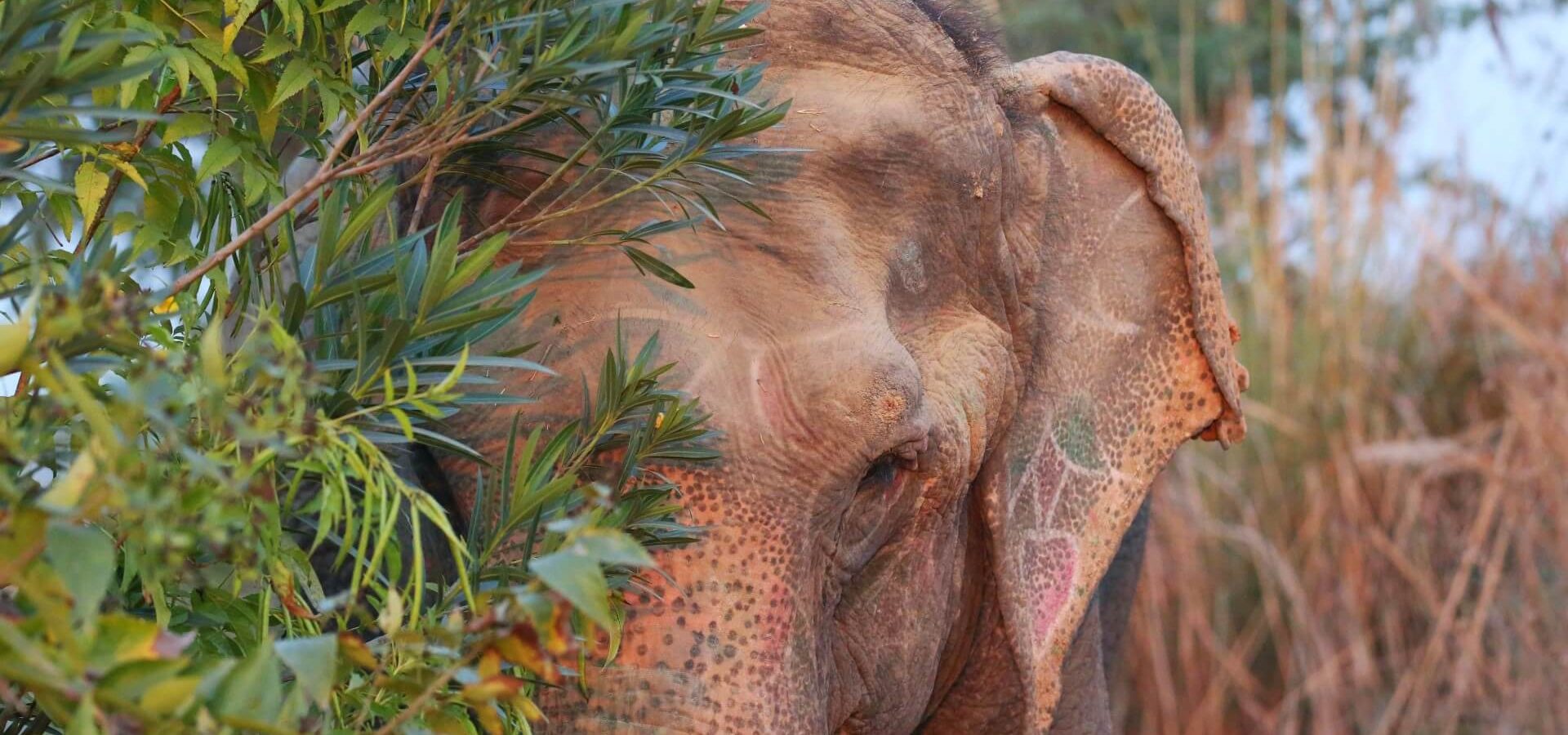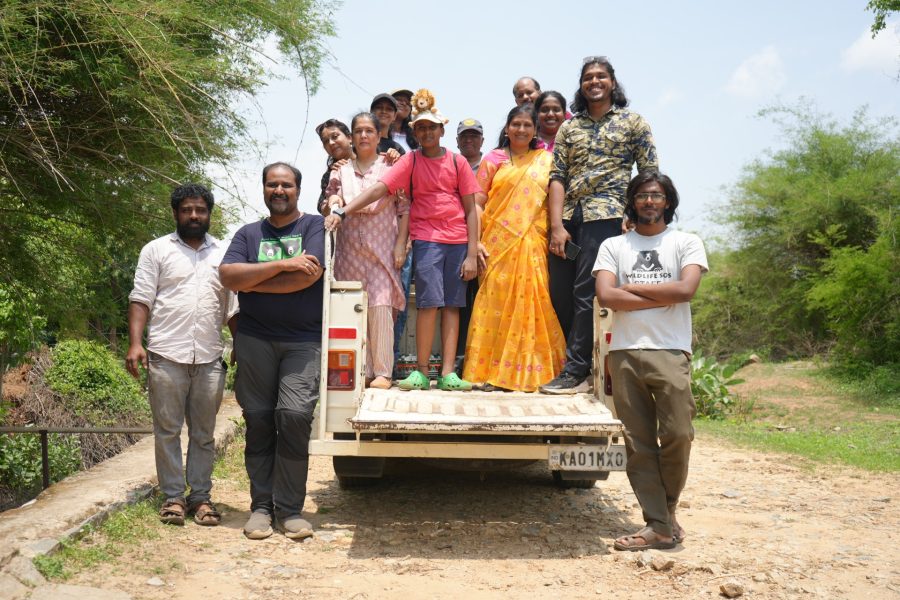Conservation of wildlife depends on various socio-cultural factors that influence the way humans interact with the natural world. These factors include poverty, literacy and even gender relations. However, one significant influence that is often overlooked while dealing with wildlife conservation is that of religion.
According to a demographic study by the Pew Research Centre, “There are 5.8 billion religiously affiliated adults and children around the globe, representing 84% of the 2010 world population of 6.9 billion.” In India, numerous religions coexist, making it one of the most diverse countries. Thus, wildlife conservation, specific to human-animal interaction, is bound to intersect with a myriad of customs and traditions.
As the Wildlife SOS team works towards mitigating human-animal conflict in various regions, we often have to navigate the sensitive path of faith. While it is easy for some to denounce certain practices, the need of the hour is to respect local sentiments and include them in the fight to conserve India’s wildlife.
The following are highlights compiled from the various interactions that took place between Wildlife SOS and the people who live closest to wildlife. These interactions have helped us understand that wildlife conservation can be successful if it is done with respect to people and their belief systems.
- The Sloth Bear’s “Curse”
In a remote village in South India, the tale of the Sloth bear’s curse is often recounted. It is believed that prior to the Wildlife (Protection) Act of 1972, a shooter had been hired to kill a Sloth bear terrorizing the village. It was when the bear was inside the village temple, and assumed to be praying, that the shooter finally had a clear vision of it. As he loaded his gun, the villagers pleaded with him to let go of the bear. Shooting someone who was praying to God would be the ultimate sin. Adamant on completing his mission, the shooter fired, and the bear fell on the feet of the idol. It is believed that since that day, the village has been cursed. As attacks by the Sloth bear in the area increased, the villagers believed they could repent and live at the mercy of the animal they had once wronged.
When Mr. Swaminathan Shamugavelu, a Wildlife Biologist at Wildlife SOS, ventured into the village some decades later to understand the conflict in the area, the tale was recounted to him with intense fervour. As a scientist, every part of him wanted to explain to the villagers that this was a misguided belief. He wanted to tell them that Sloth bears were coming often to the temple because of improper disposal of garbage, and leftover food items offered to God. Yet, he practised restraint, understanding that often at the intersection of wildlife conservation and religion, respecting presiding belief first is perhaps the right way to proceed.
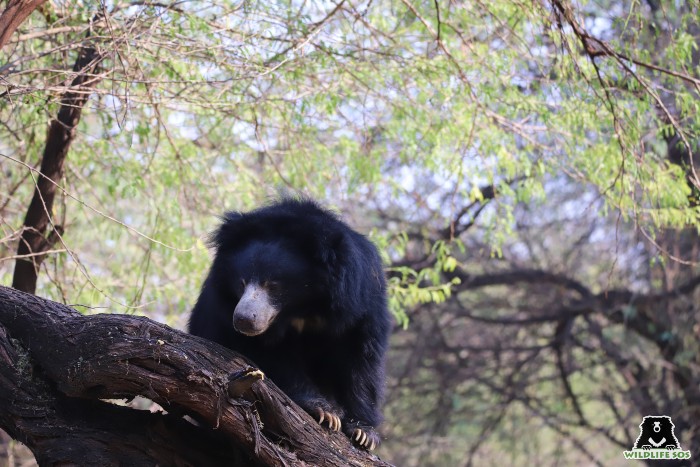
- Divine Snakes
A Hindu lore states that during the month of Shravan, the fourth month in the Hindu calendar, Lord Shiva drank poison and kept it in his throat to save the universe from being destroyed. A few drops of the lethal poison fell into the ocean and were drunk by snakes, who helped Lord Shiva save the world. This story gave birth to the reverence of snakes and their association with Lord Shiva.
During the period of Shravan, devotees of Shiva flock to temples to receive blessings from him. Taking advantage of his association with snakes, snake charmers situate themselves outside temples, armed with captured snakes. Unaware of the cruelty meted out to the snakes at the hand of the charmers, devotees pay snake charmers to gain blessings. Charmers also encourage devotees to feed milk to the snake to receive good fortune. Some snake charmers have become god-like figures in villages, and act as the first point of contact in cases of snake bites.
The reality behind snake charming is that captured snakes are made to undergo brutal procedures to make them tameable. Some have their mouths sewn shut to prevent them from biting, some are cruelly defanged, and most are kept in stifling boxes. Moreover, snakes cannot digest milk and suffer tremendously when they are inundated with it.
Every year, during the month of Shravan, the Wildlife SOS Anti-Poaching team carries out large-scale anti-poaching operations in collaboration with the Uttar Pradesh Forest Department. The team ventures into Shiva temples, where they rescue snakes from snake charmers. However, merely relieving snakes from charmers does not guarantee a long-term change. The Wildlife SOS team is committed to raising awareness amongst devotees about the torture endured by snakes. After learning about the cruelty endured by the animal they worship, devotees refuse to encourage crimes against snakes. The reverence of snakes becomes an essential tool that encourages devotees to conserve these snakes.
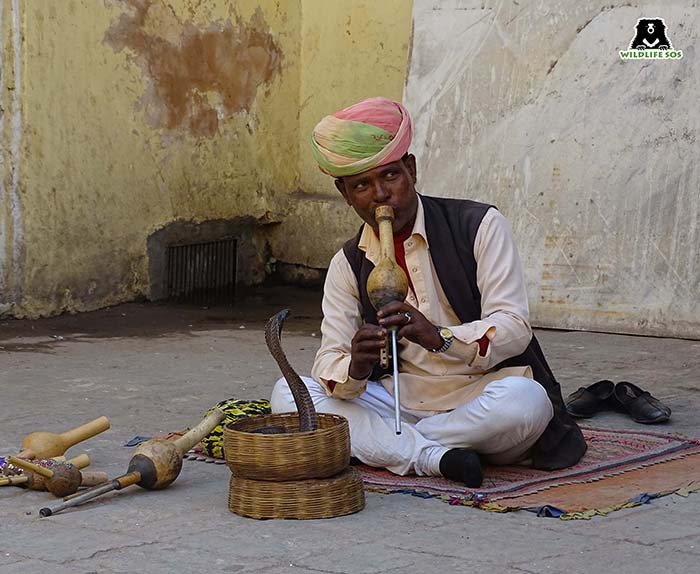
- Owl Is Not Well
Owls are believed to be the mount or vahaan of Goddess Lakshmi, the Hindu deity of prosperity and wealth. During the festival of Diwali, Goddess Lakshmi is worshipped, and many occultists perpetuate the myth that sacrificing an owl will bring good luck and fortune!
Guided by this belief, ritualistic sacrifices of owls are carried out on the days preceding the festival. Wildlife SOS has noticed an increase in trafficking, poaching, and harming of owls during the time of Diwali.
The Wildlife SOS team works hand-in-hand with the Gujarat Society of Prevention to Cruelty of Animals (GSPCA) to curb such sacrifices. Amidst intense anti-poaching operations, we also take out time to inform people about the falsity of these claims and encourage them to protect the owl.
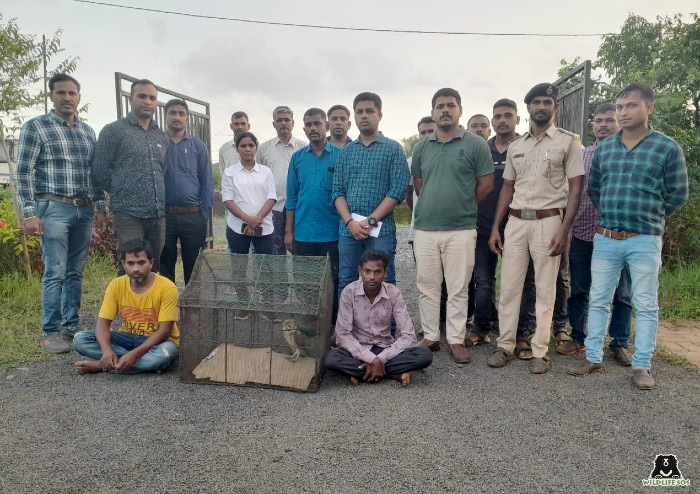
- All Hail The Crocodile
Wildlife SOS in collaboration with the Gujarat Society for Prevention to Cruelty to Animals (GSPCA) has long been working to mitigate human-crocodile conflict and rescue distressed crocodiles. As the WSOS-GSPCA team worked with locals to provide aid to crocodiles, they learned that this species was revered by some.
Khodiyar Mata, a deity highly revered in Gujarat, was said to have been aided by a crocodile as she made her way back from the pits of hell. Thus, for followers of Khodiyar Mata, the crocodile occupies an auspicious position, akin to the goddess herself! Some believed that the spotting of a crocodile close to their homes or backyards was a blessing from Khodiyar Mata. Others simply wished to ensure the safety of the crocodile. The Wildlife SOS team developed a nuanced understanding of what the crocodile meant for the community. Such understanding allows us to work with the community better in order to conserve the region’s revered reptiles.
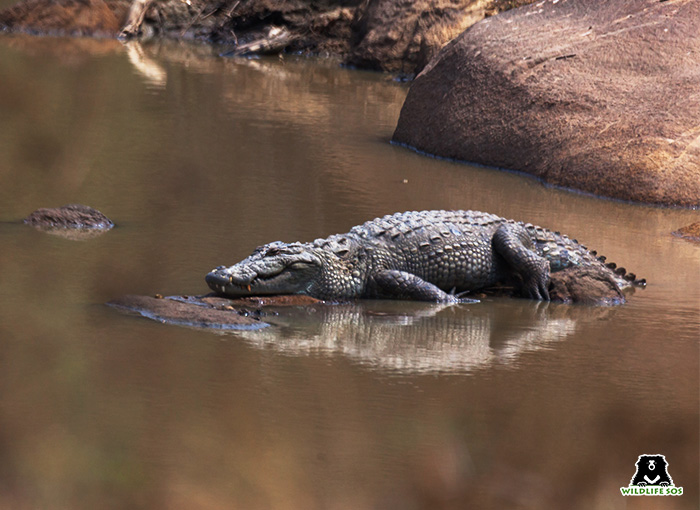
- With The Blessing of Leopards
In the western region of Maharashtra, leopards and humans are striving to coexist. Wildlife SOS has been active in the region since 2007, helping the forest department mitigate human-leopard conflict. This is despite having a deep-rooted respect for these big cats in the region, where the leopard is considered to be a god-like figure.
It is not uncommon to come across idols of leopards dotting the ghats on the way to Pune from Mumbai. For centuries, locals have believed that if they worship the leopard idols, the big cats will bless their journey instead of harming them as they travel. Others pray to the leopard on the second day of Diwali, asking the feline to bring them prosperity and luck.
To control human-leopard conflict, it is crucial to understand and respect local beliefs. Any effective communication depends on actively listening to the key stakeholders. The Wildlife SOS team regularly conducts training and awareness programmes with communities that come across leopards often. Our goal is not to diminish their religious beliefs, but to strengthen their respect with knowledge.
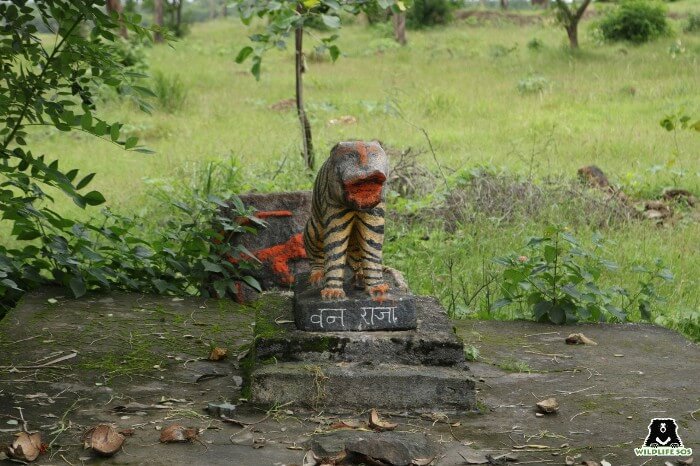
- The Sacred Elephant
No animal in the continent of Asia is as revered as the majestic Asian elephant. In the Buddhist tradition, the elephant is associated with Queen Māyā of Sakya, the mother of Gautama Buddha. In Hinduism, the Elephant symbolises Lord Ganesha, the remover of obstacles and carrier of fortune. The prestige granted to elephants in various traditions is heightened in India through its attribution as a heritage animal protected under Schedule I of the Wildlife (Protection) Act of 1972.
Despite the sacred status accorded to elephants, these mammals continue to be abused in tourism, begging, and entertainment industries. Captured as young calves, elephants are made to go through a brutal taming process to be put to work. Fighting an uphill battle for survival, Asian elephants are slowly dwindling in numbers. In the last three generations, the Asian elephant population has declined by 50 percent.
Determined to protect an animal considered the pride of India, Wildlife SOS has rescued over 40 elephants from stressful and harsh conditions. Many of them suffer from irreversible ailments caused by the harrowing working and living conditions. At Wildlife SOS, rescued elephants are provided with daily medical care, love, and a life of freedom.
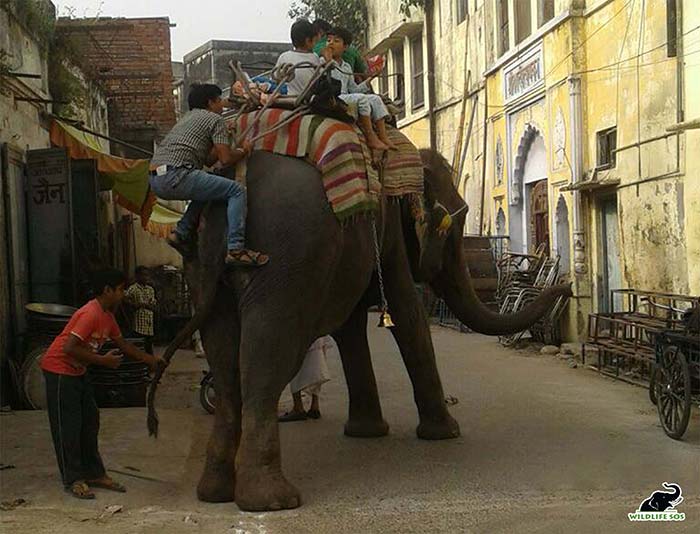
With every elephant rescue, Wildlife SOS aims to raise awareness regarding the plight of Asian elephants. Our awareness campaigns stem from a nuanced understanding of what the elephant represents in Asia. We recognize that often those contributing to the use of elephants for riding or other purposes are unaware of the brutality that they undergo. As locals and tourists become aware of that, they become as determined as us to save this mammal.
Knowledge empowers faith in a way that motivates people to protect animals. The practice of wildlife conservation requires a contextual, in-depth and holistic understanding of the various belief systems that are linked with animals. With knowledge, one can respectfully steer a dialogue in favour of wildlife conservation.
At Wildlife SOS, we believe that respecting local traditions, beliefs and values are integral to conserving wildlife. You can read more about our approach to saving wildlife. To support our efforts in the rescue and rehabilitation of distressed animals, click here.

